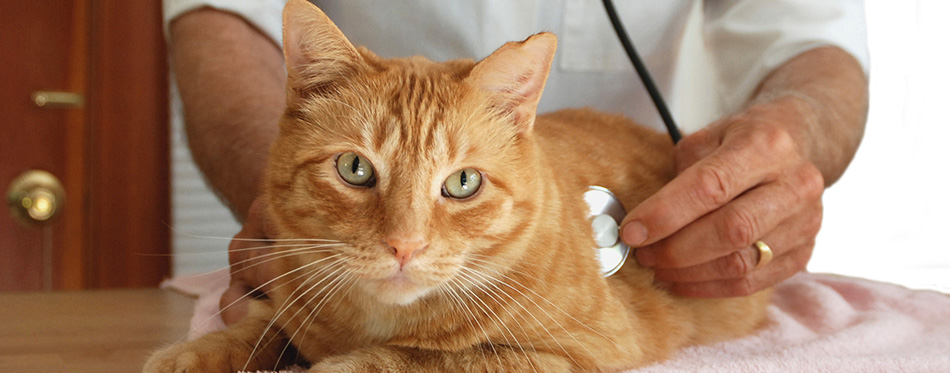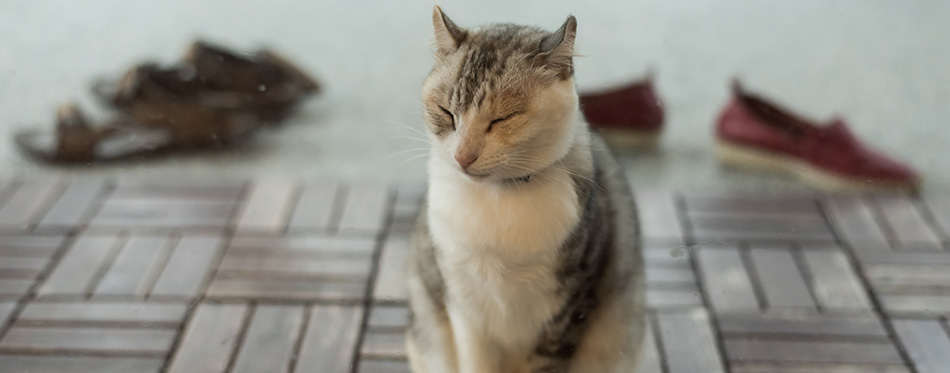The kidneys are a complex and delicate organ in your cat’s body that have the job of removing waste substances and toxins from the bloodstream and turning them into urine. This is then removed from the body when your kitty has a pee. Inside the kidney there are thousands of little filtration units called nephrons. Within each nephron, there are loops of blood capillaries and a set of tubes. Waste products pass out of the blood capillaries and into the tubes where urine is produced. A series of ducts drain the urine from the nephrons into a larger tube called the renal pelvis. This leads into the ureter and exits the body.
With so many tiny tubes playing a crucial role in the function of the urinary system, it is easy to see how blockages can lead to kidney and urinary problems. One cause of blockages in cats is kidney stones. If you are concerned that your kitty may have kidney stones or if they have received a diagnosis from your vet, it can be a worrying time. Here are the basic facts that you need to know.

How Kidney Stones Are Formed
There are several types of minerals that are naturally present in urine and sometimes these can clump together to form very small crystals. Over time, several crystals can clump together and can form stones called uroliths but they are also referred to as urinary stones or calculi.
This can happen anywhere in the urinary system including the ureter, bladder or urethra but the stones that form in the kidney are called nephroliths. A cat that has nephroliths in their kidneys is said to be suffering from nephrolithiasis. Kidney stones and fragments of these stones can sometimes pass into the ureter and this can cause serious complications. Head over to our review of cat food for urinary tract health for more choices.
If your kitty has a stone, it is most likely to be made up of magnesium ammonium phosphate (which is referred to as struvite) or calcium oxalate. There are some types of diet that can help to control struvite stones but actually increase the risk of calcium oxalate stones forming.
Why Cats Develop Kidney Stones
Many different species of animal (including humans) can develop kidney stones but they seem to be a particular problem for cats. This is because felines produce urine that is very concentrated and is also acidic. This makes the formation of kidney stones more likely and some other substances in the cat’s urine can make the risks higher. There is little doubt that the environment of the urinary tract plays an important role in the formation of kidney stones. This can be changed by the presence of minerals (such as calcium) which can be introduced by diet, infection or inflammation or by changes in the acidity of the urine. It is thought that the amount of urine that a cat produces, how frequently they take pee, medication and genetics also play a role. Diets that make your cat’s urine more acidic could also be a causative factor as are recurrent urinary tract infections.
A kidney stone consists of a hard core with many layers formed around it. Once the stone starts to form, it very gradually grows and this can take weeks or months.
Another type of stone looks more like sand or even like a paste. These are made up of very small stones mixed with crystals and other substances. The resulting mass plugs up the urinary tract and this is most commonly found in the urethra (the tube leading from the bladder to the outside of the body).
How Common Are Kidney Stones in Cats?
You may think that you are hearing more about kidney stones in cats these days than you used to and you would not be wrong! There is plenty of evidence to suggest that the incidence of kidney stones is increasing in our feline population. Cats are much more likely to suffer from them than dogs and some breeds such as the domestic shorthair and longhair, Siamese and Persians are more likely to have them. The calcium oxalate stones can occur in males and females but are more common in males. They are also more likely to occur in middle-aged cats who are between five and nine years old and this may be because older cats have urine that is more acidic.
So, why are kidney stones more common in cats now than they used to be? Experts suspect that it is something to do with their lifestyle. There is an increasing trend towards keeping cats entirely inside and this will inevitably decrease their activity levels. It is already known that inactivity in humans increases the risk for calcium oxalate calculi kidney stones and the same may be true for cats. Find out more about сat food for kidney disease here.
Pet food may also be contributing to the problem. The competition in the pet food industry and the increase in demand for meat-based products has driven up the price of some ingredients. Manufacturers have to maintain profits and some have turned to plant-source proteins as an alternative to meat ingredients. Soy, corn and gluten are typical examples and these are most often found in cheaper brands. It is quite easy to hide the true meat protein content in the ingredients list and confuse cat owners. Some of these ingredients, including soy, are very high in oxalate.
Symptoms of Kidney Stones in Cats
Your cat can have kidney stones and show no symptoms at all. They may have been found by accident when your vet was investigating another medical problem. Inactive kidney stones are not infected and do not get bigger. They should be monitored regularly using urine analysis but no further action is required.
However, other cats do have symptoms caused by kidney stones and they can include:
- Blood in the cat’s urine.
- Changes in urination. It is common for cats to pee very frequently but only produce a small quantity of urine each time. This is called polyuria. Other cats produce a lot of urine.
- Your cat may be in pain when they are taking a pee and they may find it difficult to pee at all.
- Recurrent urinary tract infections.
- Your vet can take your cat’s temperature to check for this.
- Abdominal discomfort or kidney pain.
- This may be accompanied by a loss of appetite.
- Loss of weight.
- Your kitty may seem to not be interested in anything and appear to lack energy.
You may also like our article on Cat Food for Weight Loss.

Diagnosing and Treating Kidney Stones in Cats
If you suspect that your cat has kidney stones, it is important that they are seen by a vet right away. You will need to provide a complete history of the problem including when the symptoms started and how severe they are.
Several medical tests can be used to make a diagnosis of kidney stones. Here are some of the procedures that your cat may be offered.
- Physical examination: This will probably include taking your cat’s temperature using a rectal thermometer.
- Abdominal radiographs (x-rays): These are useful for determining the size and shape of kidneys and to detect urinary stones. However, smaller stones can be hidden by intestinal contents and will not show up. Urate stones that occur as part of liver disease are unlikely to show up on simple x-rays.
- Abdominal ultrasound imaging: This is needed to confirm the location of kidney stones and determine whether they are causing an obstruction.
- Contrast radiography: A radioactive dye and special scanner is used to confirm that there is a blockage in a kidney and show if it is able to produce urine.
- Urinalysis: A sample of urine is analyzed to detect if there are bacteria in it that are causing an infection or which are helping crystals to form. The laboratory can work out which antibiotic should be used for treatment. Information from urinalysis can also help to tell the vet what type of kidney stone is troubling your cat.
- Blood test: A blood test may be required to obtain a complete blood count (CBC) and an analysis of the blood chemistry and electrolyte concentrations. This gives information on the type of kidney disease that your cat has and whether they have the blood biochemistry that favors kidney stone formation.
- Systemic blood pressure: This is an important complication of any type of kidney disease and your vet needs to know if your cat’s blood pressure is raised.
- Mineral content of the stones: The only way to accurately determine what type of stone is causing the problem is to take one out and analyze it in a laboratory. A vet can remove nephroliths from your cat’s kidneys by a procedure called extracorporeal shock wave lithotripsy (ESWL). The stones are broken in the urinary tract using sound waves and are expelled from the body in the urine so that they can be examined.
Your vet may treat your kitty with medication which will dissolve the stones. You may be asked to change your cat onto a special diet to prevent the stones from forming again. In severe cases, surgery may be required to remove the stones.
Source:
- Bladder and Kidney Stones – Cornell Feline Health Center

